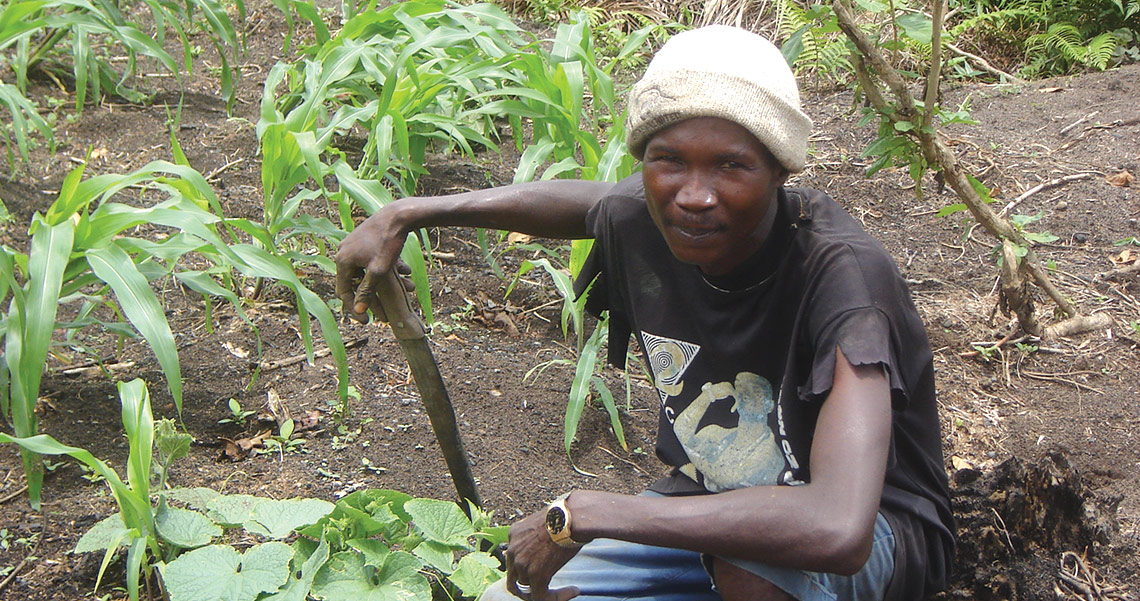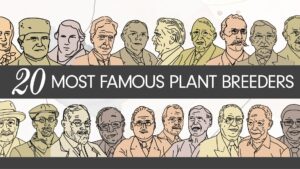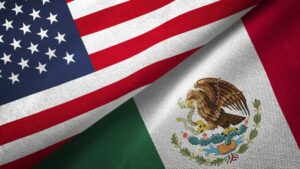As part of Seed World’s centennial celebration, we are featuring a few individuals who have made significant contributions to the industry. Checkout who’s on the list.
Known as the man who saved a million lives through his work to improve wheat yields, Norman Borlaug was born March 25, 1914, on a farm near Cresco, Iowa. Borlaug studied at the University of Minnesota, earning a bachelor’s in forestry and a master’s and Ph.D. from the Department of Plant Pathology with a minor in plant genetics.
Borlaug got his start with DuPont in Wilmington, Delaware, prior to the bombing of Pearl Harbor. It wasn’t until 1944, when he participated in the Rockefeller Foundation’s pioneering technical assistance program in Mexico as research scientist that he started working to improve wheat. For the next 16 years, he worked to solve a series of wheat problems that were limiting to wheat cultivation in Mexico and helped train a whole generation of young Mexican scientists.
Borlaug’s work in Mexico not only had a profound impact on his life and philosophy of agriculture research and development, but also on agricultural production — first in Mexico and later in many parts of the world.
It was on research stations and farmers’ fields of Mexico that Borlaug developed successive generations of wheat varieties with broad and stable disease resistance, broad adaptation to growing conditions across many degrees of latitude and with exceedingly high yield potential. These new wheat varieties and improved crop management practices transformed agricultural production in Mexico during the 1940s and 1950s and later in Asia and Latin America, sparking what today is known as the Green Revolution.
Because of his achievements and efforts to prevent hunger, famine and misery around the world, it is said that Borlaug has saved more lives than any other person who has ever lived.
Borlaug is one of only five people to have received the Nobel Peace Prize, the Presidential Medal of Freedom and the Congressional Gold Medal, which is the highest award that the U.S. government can bestow on a civilian.
Borlaug died Sept. 12, 2009, but his legacy lives on through those his achievements, the lives saved and those he taught.
Helping Africa
Yet, according to his granddaughter, Julie Borlaug, in his own eyes he hadn’t done enough. “The ‘Gene Revolution,’ that’s what my grandfather wanted to see,” Julie says. “When the doctors told him he had three days to live, he was in shock. But it wasn’t because he was worried he would miss the family or anything of that nature. He said, ‘I haven’t done what I needed to do in Africa; I have failed Africa; I need more time for Africa.’”
While Julie isn’t involved in plant breeding, she serves as the associate director for external relations of the Norman E. Borlaug Institute for International Agriculture and talks with groups about the importance of using the technology we have today to help prevent hunger.
“Getting a Green Revolution that’s appropriate to Africa is really important,” she says. “That is the last area of land that we can truly expand on. If we do it correctly, we bring modern agriculture [to Africa]; it won’t be the production systems we have here in the United States or in Brazil — but bring technology so they can become a breadbasket.
Borlaug points to Brazil as an example. “They are doing tons of development work within developing countries,” she says. “I think those are the types of revolutions we need to start and they are about sustainability. It has to be sustainable for water and for natural resources. A new revolution that will embrace technology will be able to do that.
“He cultivated a dream that could empower farmers; he planted the seeds of hope; he watered them with enthusiasm; he gave them sunshine; he inspired with his passion; he harvested confidence in the hearts of African farmers; he never gave up.”
— Yohei Sasakawa, in memory of Norman Borlaug
“Anytime you go to Africa and meet with the rural farmers, they want it; they want the GMO seeds. They want the inputs that will move them ahead. And we have to let their farmers choose. We’ve proven that GMO seeds are safe, but we have to allow them to have that choice in using modern farming systems. Africa can become a breadbasket.”
Plant Breeding in Africa
Today, there are a number of efforts underway to help Africa achieve it’s Green Revolution or ‘Gene Revolution’ as Norman might call it. One of those efforts is the African Plant Breeding Academy, which recently graduated 23 botanists from 11 African countries and 21 institutions.
“This is a huge leap for the diversity and sustainability of African agriculture and the start of a very different future for rural and urban food consumption patterns.”
— Howard Shapiro
The botanists were the first group to be trained on neglected and orphaned crops that are necessary for food security and nutrition. They were trained on crop improvement and developing plant materials to benefit African farmers.
“I have been exposed to the use of modern molecular approaches in plant breeding and I will share the knowledge I have learned with my fellow scientists,” says John Onditi, a potato breeder from Karlo Tigomi, Kenya. “I will be able to incorporate many crops and especially orphaned crops that so far have no information that can be used as a baseline for studying and improving them.”

Tony Simons, director general of the World Agroforestry Centre, says there is a long history of improving plants.
“In the 1960s, when the world faced chronic food shortages, that is when the Green Revolution was created,” Simons says. “It has had an enormous impact in Asia, particularly in India, and Latin America. The two continents were able to turn food deficits into food surplus because of placing an enormous focus on plant breeding.
However, Africa missed out because of the level of investment, infrastructure, capacity and the ability to use those techniques was not there.
“More recently, we have had initiatives in Africa to try and change this,” Simons says. “For example, the Alliance for a Green Revolution in Africa combines opportunities and science for accelerated plant breeding. But if we are to use these techniques, we need capacity.”
Simons notes that there is a lot of capacity in Africa but it needs to be developed and mobilized.
Rita Mumm, an associate professor emerita at the University of Illinois at Urbana-Champaign who teaches with the University of California, Davis, Plant Breeding Academy, says the program will help students develop a paper for submission to a scientific journal about guidelines for breeding orphaned crops.
Howard Shapiro from MARs Incorporated, which funds the academy, adds that only 57 plants in the world have been genetically sequenced.
“We are adding another 101, and with the training, the breeders have the ability to make decisions about plant breeding quicker, which will lead to better plants with, among other things, much higher nutrient content,” Shapiro says. “This is a huge leap for the diversity and sustainability of African agriculture and the start of a very different future for rural and urban food consumption patterns.”
According to the New Partnership for Africa’s Development, the first orphan crop to be sequenced was the baobab or wonder tree, which can be dried to produce fruit powder. It has 10 times the antioxidant level of oranges, twice the amount of calcium of spinach, three times the vitamin C of oranges and four times more potassium than bananas.
The 101 targeted crops will greatly improve the diets of Africa’s children and help to eliminate hunger and malnutrition, which causes stunting.
The African Plant Breeding Academy is part of a public-private collaboration called the African Orphan Crop Consortium, between the African Union; Mars Incorporated; Google; World Agroforestry Centre; World Wildlife Fund; University of California, Davis; and the International Livestock Research Institute, among other partners.
Through efforts such as the African Plant Breeding Academy, many more scientists and plant breeders will be working to increase yields of African crops and put an end to hunger. Maybe one day, Kenya’s Onditi, or another graduate of the program, will lead Africa’s efforts to becoming a breadbasket.














